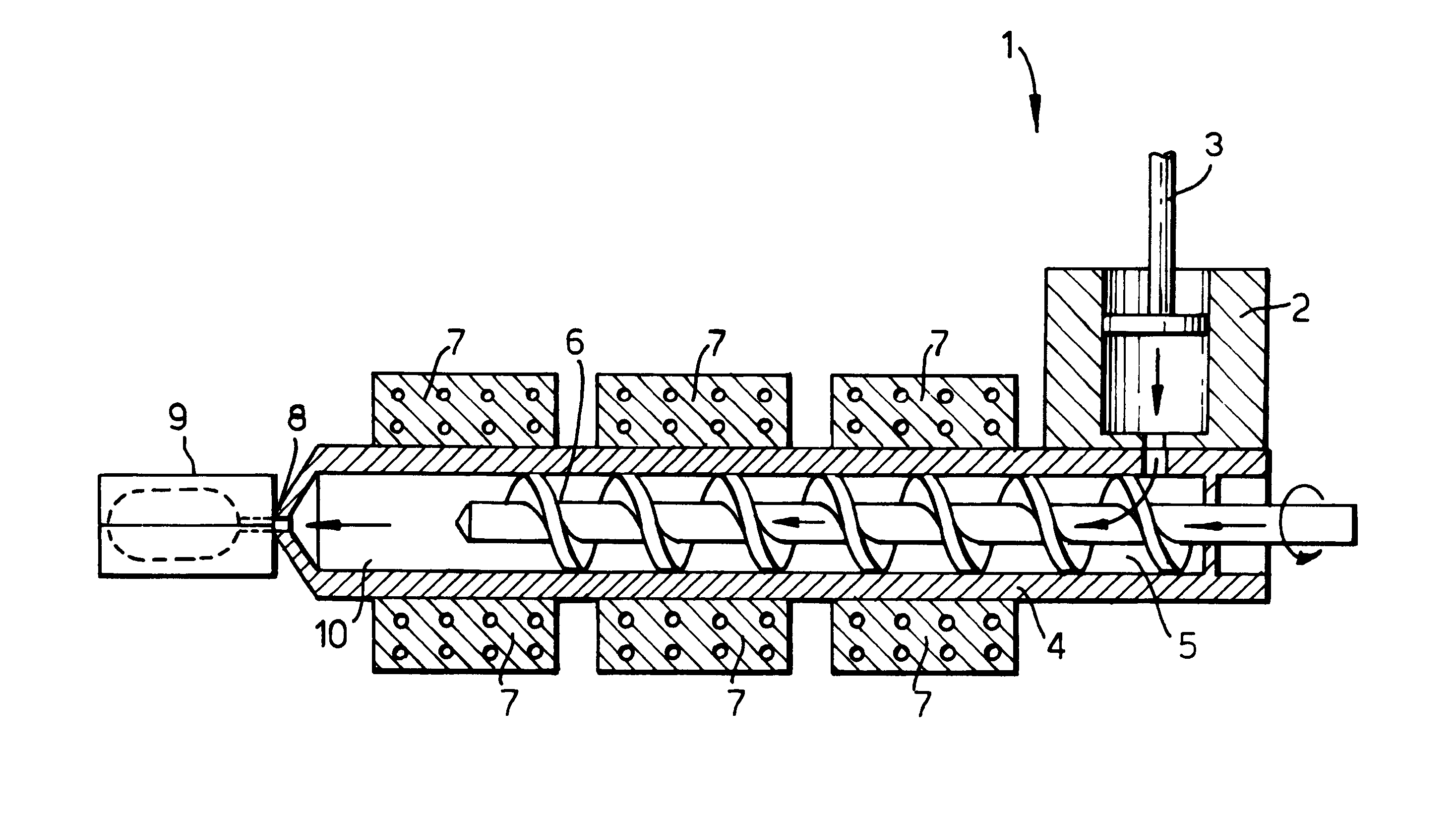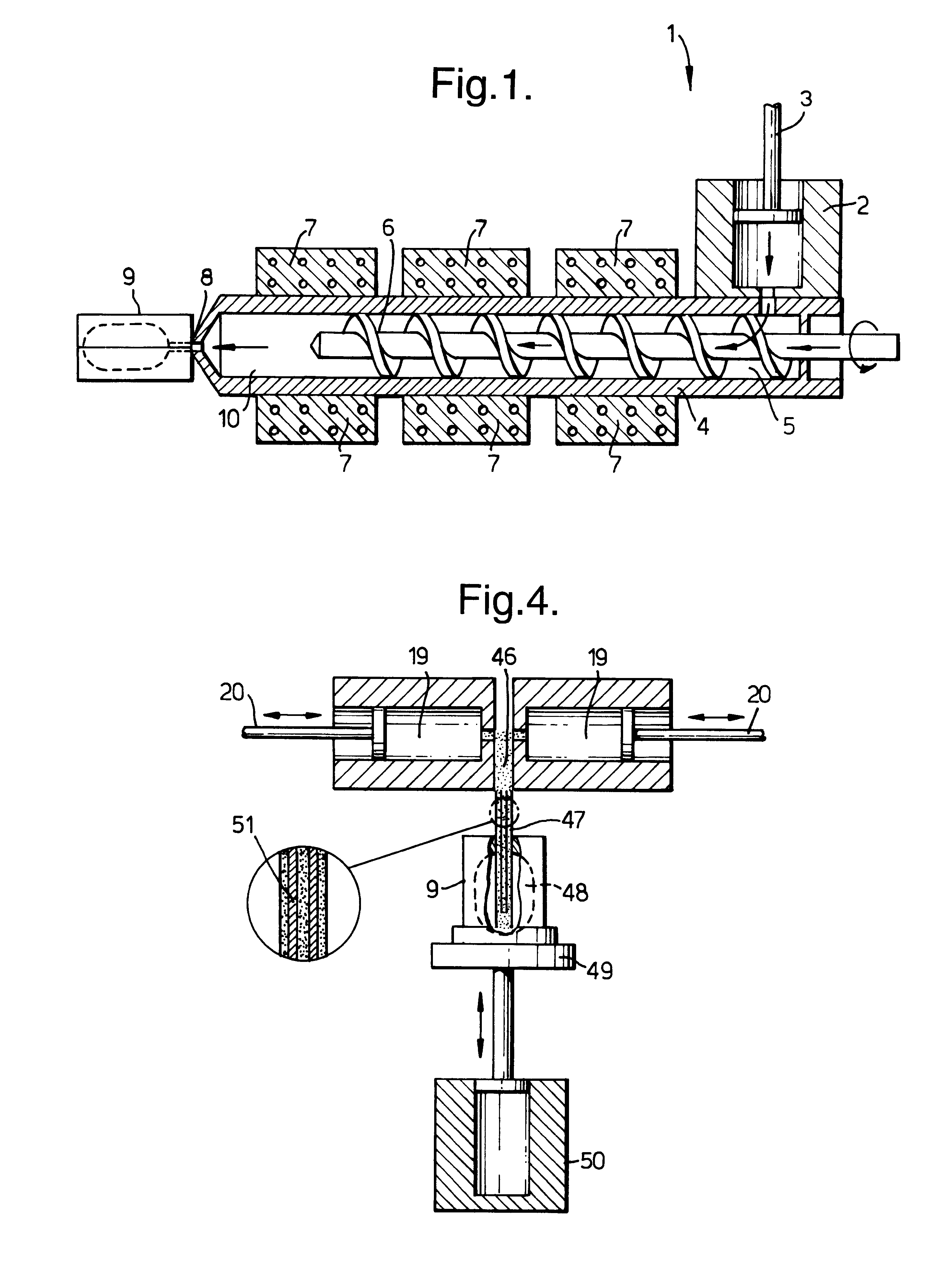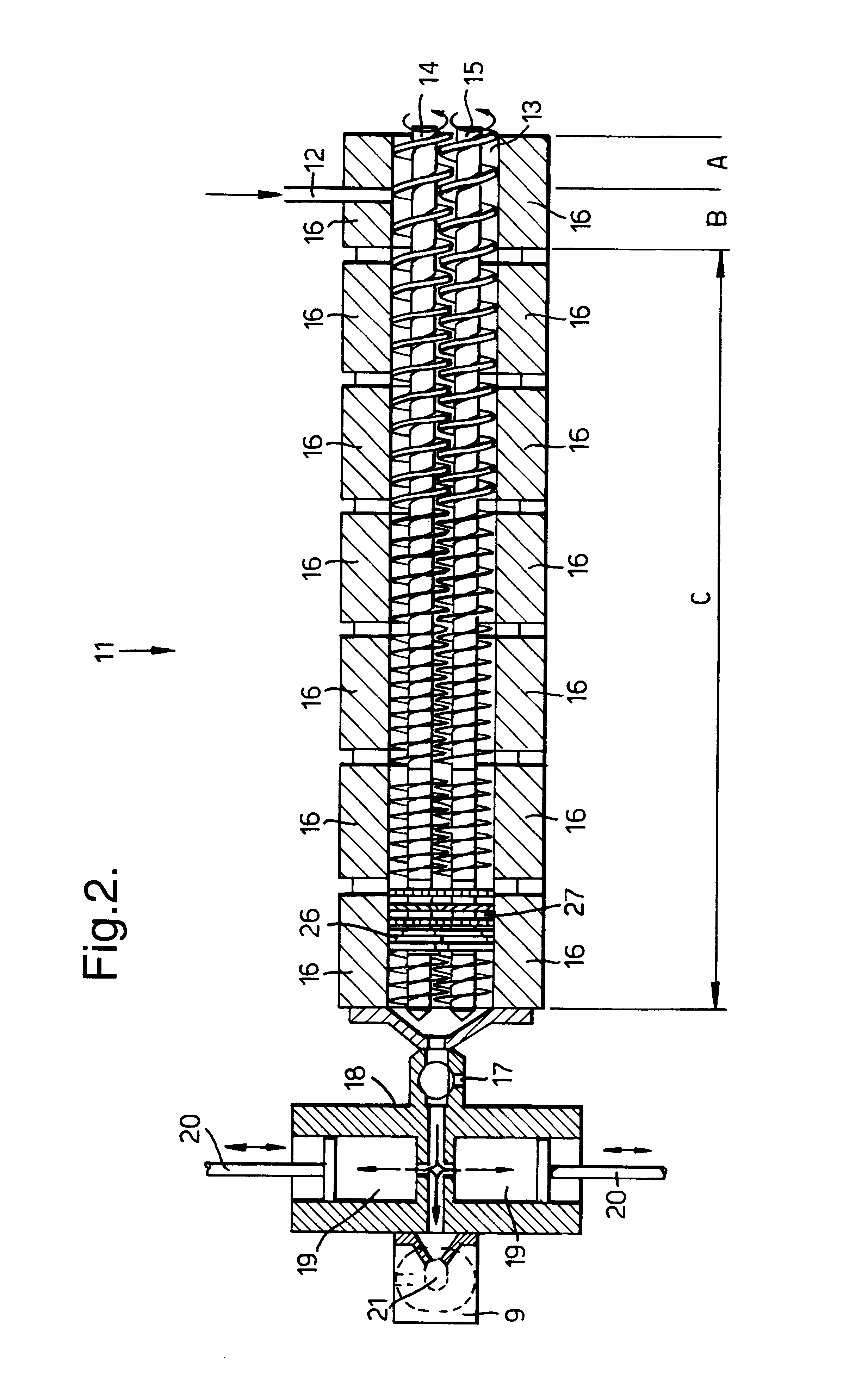Process for molding of a detergent composition
a technology of detergent composition and process, which is applied in the field of detergent composition molding, can solve the problems of residual detergent left on the die halves, poor or even non-release of the bars from the die surface, visible imperfections on the bar surface, and wet cracking along the plane, so as to reduce the operating temperature and save the operation. operation cost, the effect of preventing blockag
- Summary
- Abstract
- Description
- Claims
- Application Information
AI Technical Summary
Benefits of technology
Problems solved by technology
Method used
Image
Examples
example 1
A reciprocating screw injection moulding unit according to FIG. 1 sold as the "SANDRETTO Series 7 HP135" having three temperature controlled zones was used. The machine was fitted with a 50 mm diameter dough moulding compound screw and barrel. The feed means comprised a conventional stuffing pot, or manual feed as appropriate to the material. A screw rotation rate of 80 to 100 rpm was used.
The mould (9) comprised a pair of aluminium mould parts defining a bar shape. These were as those conventionally used in die stamping of detergent bars, modified by the addition of a feed hole sized to take the nozzle, and small holes at appropriate places in the mould to allow air to vent during filling.
Detergent formulations A, B and C were injection moulded.
Formulation B comprised white milled, commercially available UK Lux soap dated September 1996. Formulation C comprised milled commercially available Dove beauty bar dated June 1996.
A detergent composition was fed into the stuffing pot in the...
example 2
An apparatus according to FIG. 2 comprising a BETOL co-rotating twin screw extruder with 40 mm diameter screws and eight temperature control zones was used. The temperatures of the connection valve 17 and the injection head assembly (18,19,20) was also controlled.
A novel piston type injection unit according to the present invention was fitted at the end of the screw extruder. Detergent compositions as set out below were prepared in molten form and fed to the extruder using a Bran and Luebbe metering pump. The molten feed was at a temperature of 90 to 95.degree. C. It was maintained in a stirred, heated feed pot.
During filling the mould was moved either manually, or hydraulically using a mould moving mechanism according to FIG. 4 of the present application.
Detergent formulations D and E were injection moulded.
The apparatus was used to form detergent bars over a range of temperatures which were subsequently released from the moulds and checked for mould release properties and surface ...
example 3
An apparatus comprising a BETOL co-rotating twin-screw extruder with 40 mm diameter screws, eight temperature controlled zones, and a low shear, in-line injection head was used as depicted in FIG. 3. Detergent composition E was prepared in molten form (95.degree. C.) and held in a stirred, heated feed pot. It was then fed into Zone E of the extruder using a Bran & Luebbe metering pump. Detergent composition B was fed at ambient temperature to zone D as 4 mm diameter noodles using a Ktron feeder. The maximum injection pressure and the holding time were recorded. The results are given in Table 3.
The detergent compositions were in a semi-solid state when they entered the mould. In all the runs, the mould was at ambient temperature before fill and cooling was effected by packing solid CO.sub.2 around the outside of the mould for the period of time specified plus maintaining the mould at ambient temperature for a further 5 minutes.
These runs illustrate that the surface quality of the bar...
PUM
| Property | Measurement | Unit |
|---|---|---|
| pressure | aaaaa | aaaaa |
| temperature | aaaaa | aaaaa |
| temperature | aaaaa | aaaaa |
Abstract
Description
Claims
Application Information
 Login to View More
Login to View More - R&D
- Intellectual Property
- Life Sciences
- Materials
- Tech Scout
- Unparalleled Data Quality
- Higher Quality Content
- 60% Fewer Hallucinations
Browse by: Latest US Patents, China's latest patents, Technical Efficacy Thesaurus, Application Domain, Technology Topic, Popular Technical Reports.
© 2025 PatSnap. All rights reserved.Legal|Privacy policy|Modern Slavery Act Transparency Statement|Sitemap|About US| Contact US: help@patsnap.com



